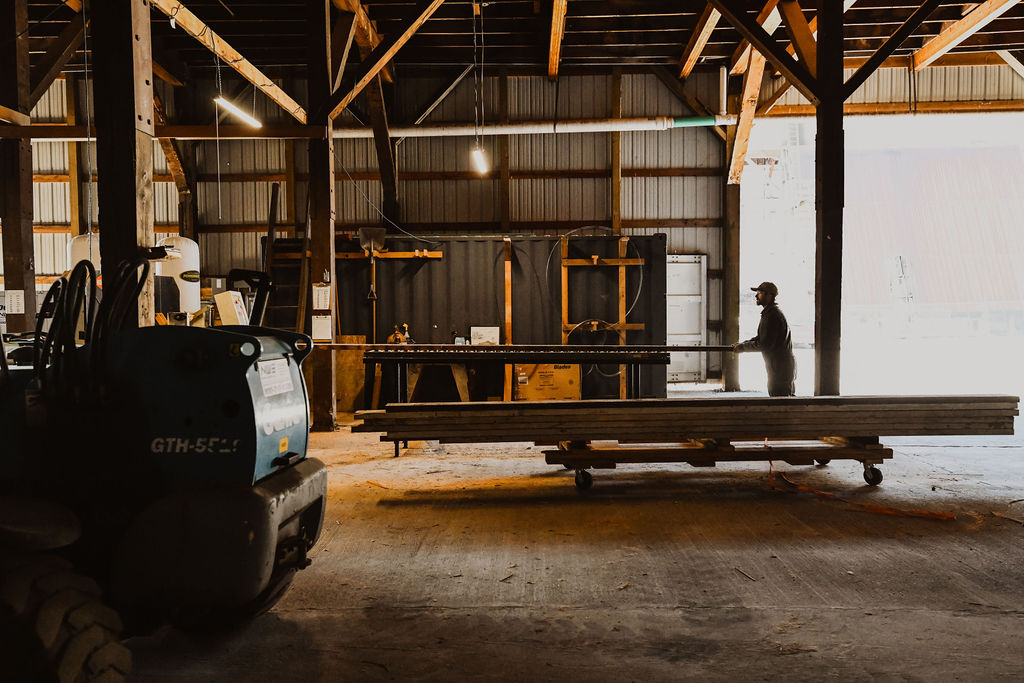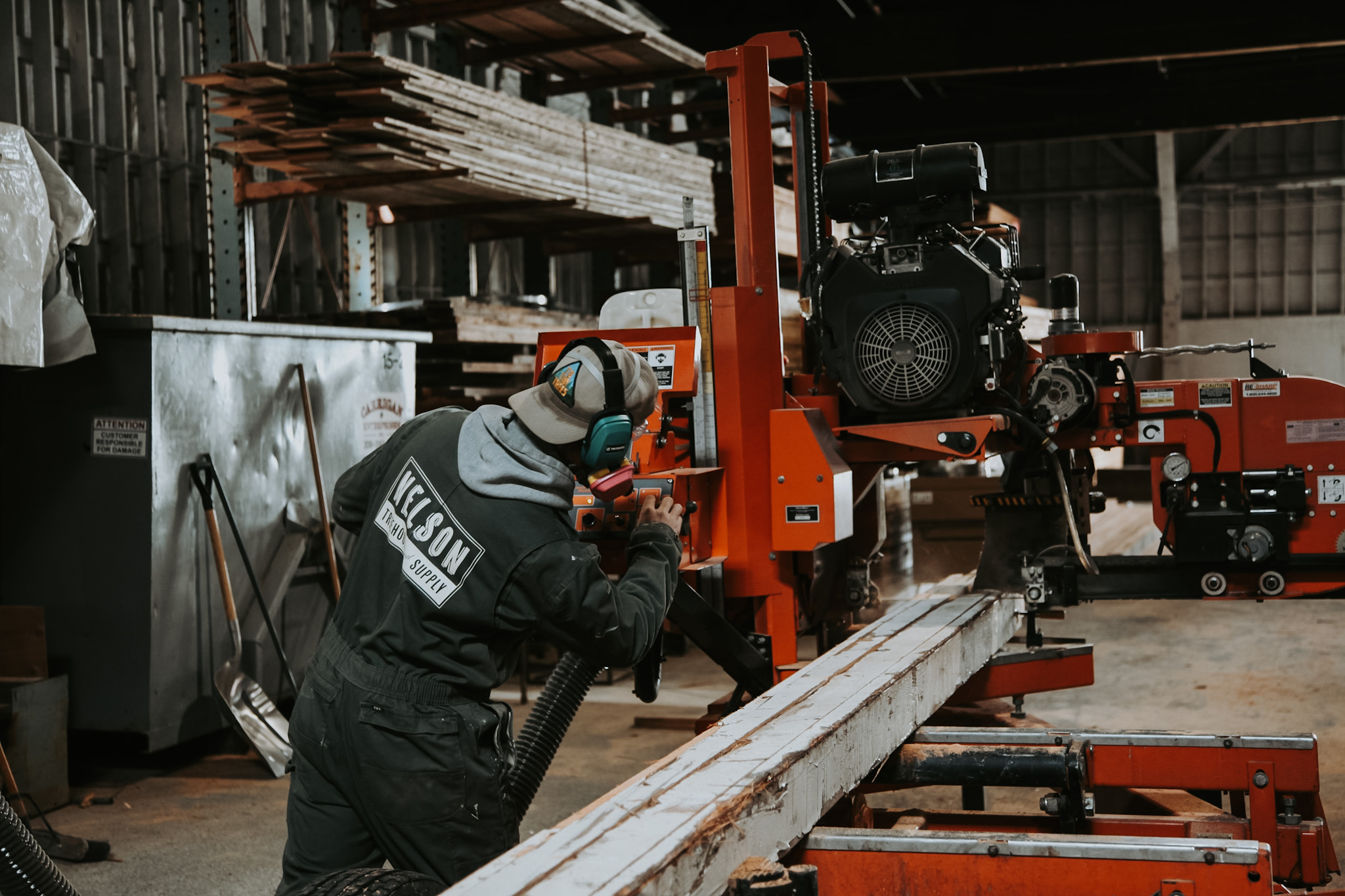
Drive down the back roads of Snoqualmie, and you’ll find Old Woods, the buzzing warehouse of some unlikely tree huggers. And underneath the towering tall ceilings of this not so secret hideout, you’re sure to find a handful of defenders… running around with tool belts jangling from their waists and carpenter pencils tucked behind their ears while sawdust hangs suspended in the air like magic crystals from a long lost fairytale. Old Woods is a super hero headquarters of sorts… for folks who love wood AND the planet’s old growth ecosystems. Old Woods mission is simple, provide unique quality wood to creative builders, while keeping good wood out of landfills and preventing deforestation. This is where the superhero part comes in. Old Woods has created a space for builders to connect with found materials, salvaged timber for beautiful custom builds.
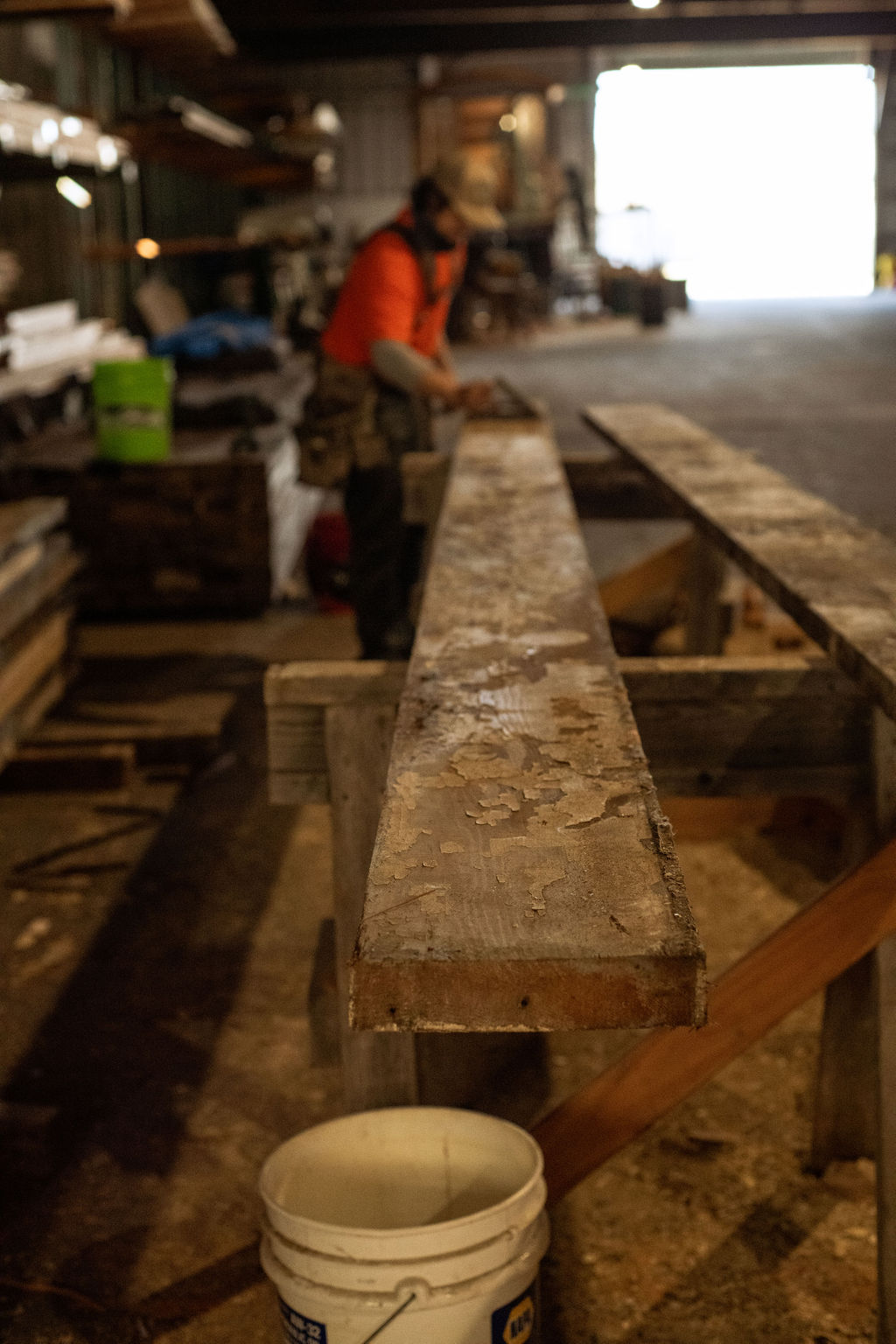
Goes to show, not all earth protecting superheroes wear capes… some inconspicuously rock safety glasses, sport hipster beards or funky haircuts and wear flannel.
The superpowers however, are a little different from the usual suspects (laser beams from eye sockets, spider webs from fingertips etc). Instead, they’re using their calloused hands to engineer better builds for the good of our home planet. They’re in the business of saving our old growth trees by recycling salvaged timber, often hidden beneath the cracking brick and plaster of old buildings.
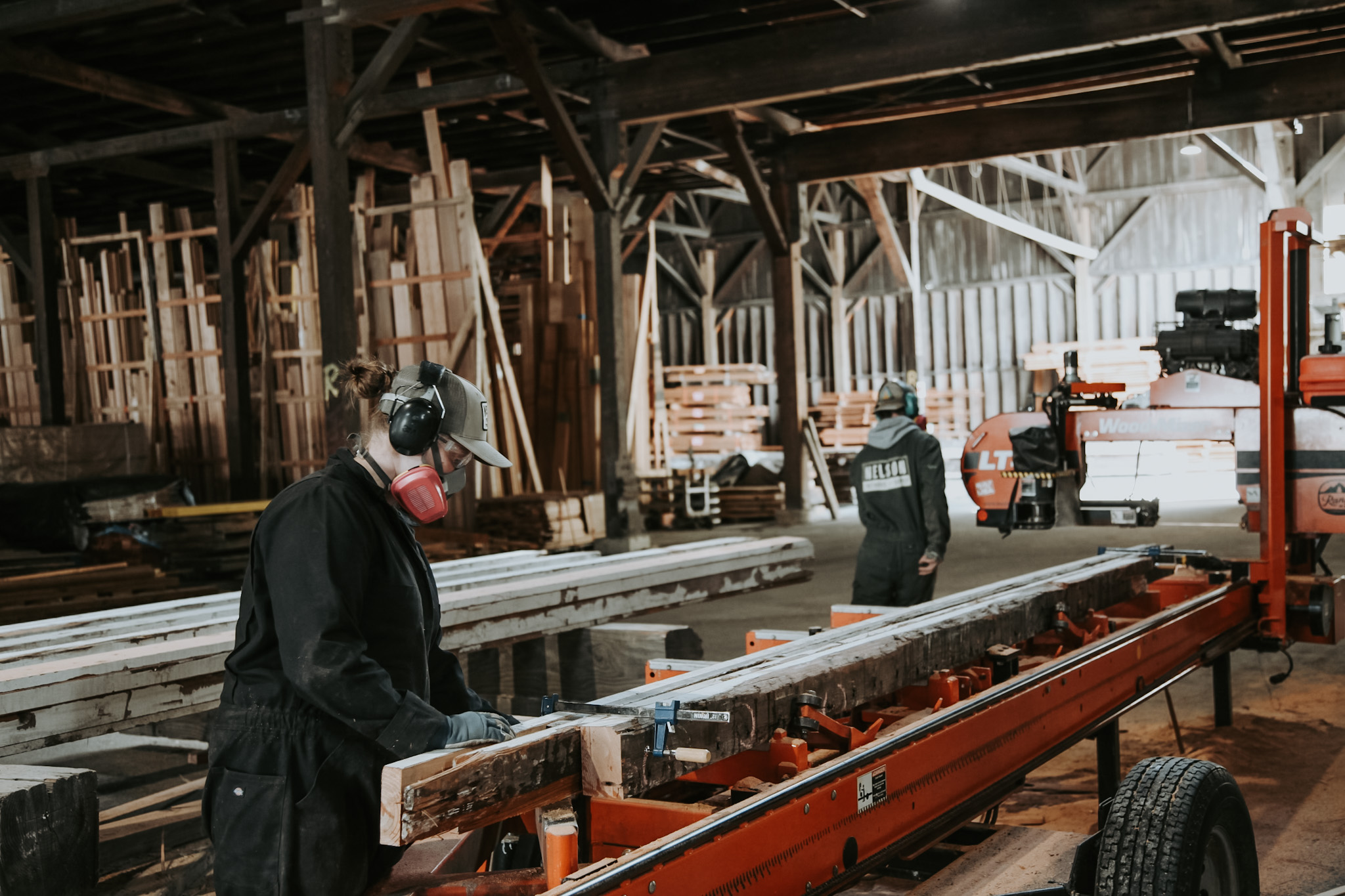
First things first, what exactly is salvaged timber? An article by Seattle Times, describes salvaged timber as, “high-quality wood removed from structures such as barns, warehouses and homes for repurposing,” (Seattle Times, 2019). This high quality wood isn’t just your run of the mill wood, it’s usually materials sourced from old growth forests, rather than a fast-growing tree species specifically planted for harvesting/logging purposes. The main difference comes down to quality. Sure, they’re both wood, but one is stronger and harder, which as you can imagine, are things you want when considering building materials. For example, “If you compared an end cut of a 2×4 sold at a modern lumber yard to a reclaimed 2×4 end cut, you would easily notice a big difference: growth rings. The growth a tree experiences in a year is measured by rings per inch. A newly harvested fast-growth tree will have just a few growth rings per inch versus up to 200 growth rings in a single inch of old-growth. The tighter the growth rings, the stronger and harder the wood,” (Seattle Times, 2019). This is one of the many reasons why old growth timber is so sought after.
But old growth timber comes at a price, for both the wallet and the diversity of the forest. But… there is another way to source timber for without cutting down precious pockets of forest.
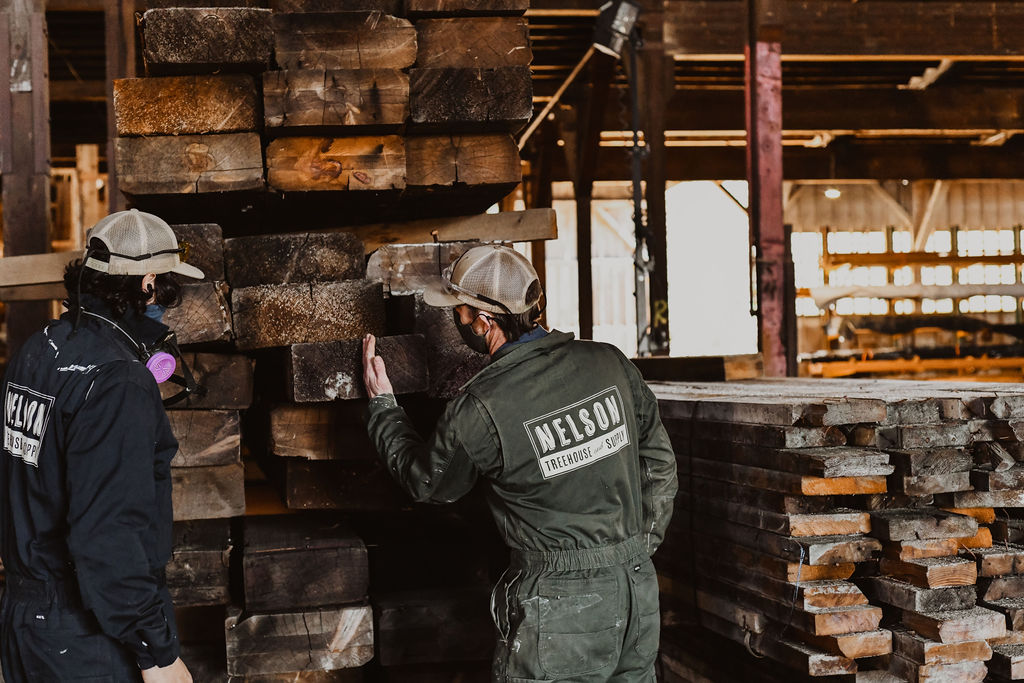
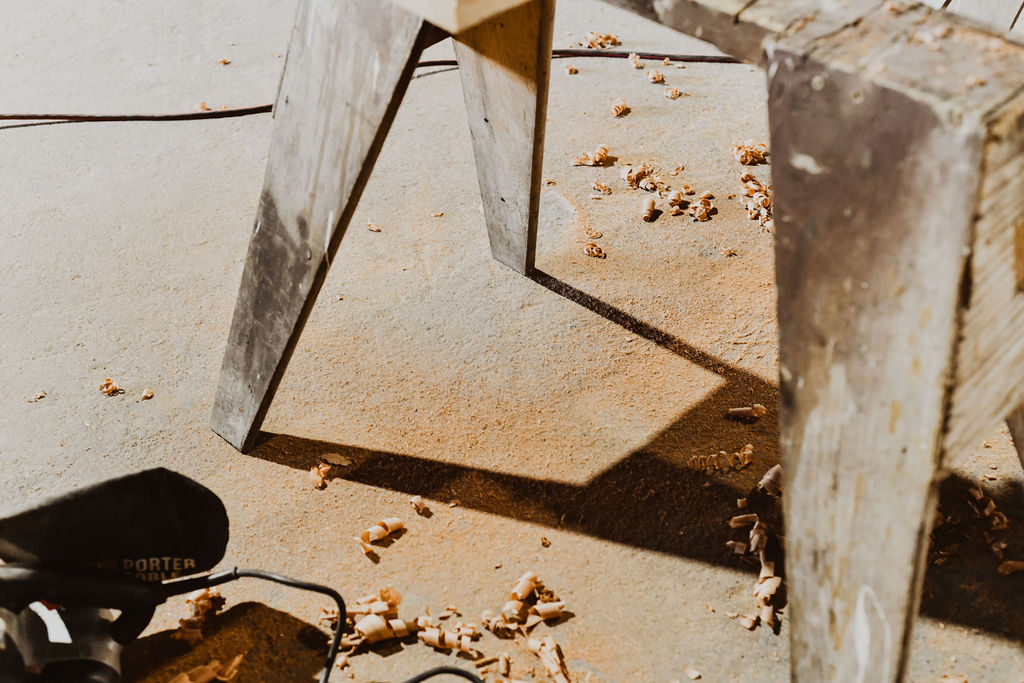
If you’ve ever driven through a really old city, you can see the deep history in the architecture of the buildings. And underneath all that history lives a timber forest of even older wood. In an article by National Geographic on timber salvaged from New York City, they report that, “Each year, some 1,000 buildings in New York City constructed with old-growth wood are demolished or gutted and renovated. The average quantity of wood per building is estimated to be 14 cubic meters. That means that, on average, 14,000 cubic meters of old-growth wood is removed annually,” (National Graphic 2021). While New York City is certainly older than our cities here in the PNW, there is still plenty of salvaged timber for custom builds here in the Seattle. In fact, there’s tons of this buried treasure over in our neck of the woods as well.
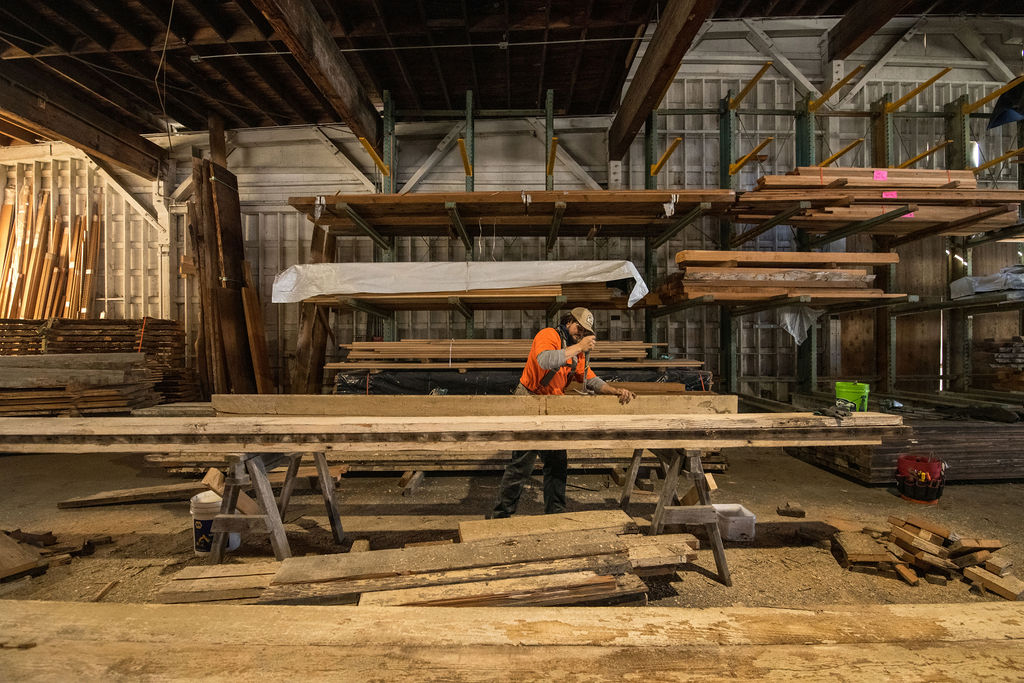 Patrick, Old Woods shop manager, explains, “a lot of what they find in these buildings is old growth timber. Today old growth wood is available brand new for a premium price but it’s being cut from virgin old growth forests. It is insane to me that people are still destroying these areas of untouched ecosystems when there are so few of these places left on the planet.” And sadly, it’s true, “Less than 4% or under 40 million acres of America’s original forests remain in existence. According to the World Resources Institute, less than 1% of “Frontier Forests”–large, contiguous virgin forests with all the species intact–still exist in the lower 48 states,” (Save Americas Forests Facts).
Patrick, Old Woods shop manager, explains, “a lot of what they find in these buildings is old growth timber. Today old growth wood is available brand new for a premium price but it’s being cut from virgin old growth forests. It is insane to me that people are still destroying these areas of untouched ecosystems when there are so few of these places left on the planet.” And sadly, it’s true, “Less than 4% or under 40 million acres of America’s original forests remain in existence. According to the World Resources Institute, less than 1% of “Frontier Forests”–large, contiguous virgin forests with all the species intact–still exist in the lower 48 states,” (Save Americas Forests Facts).
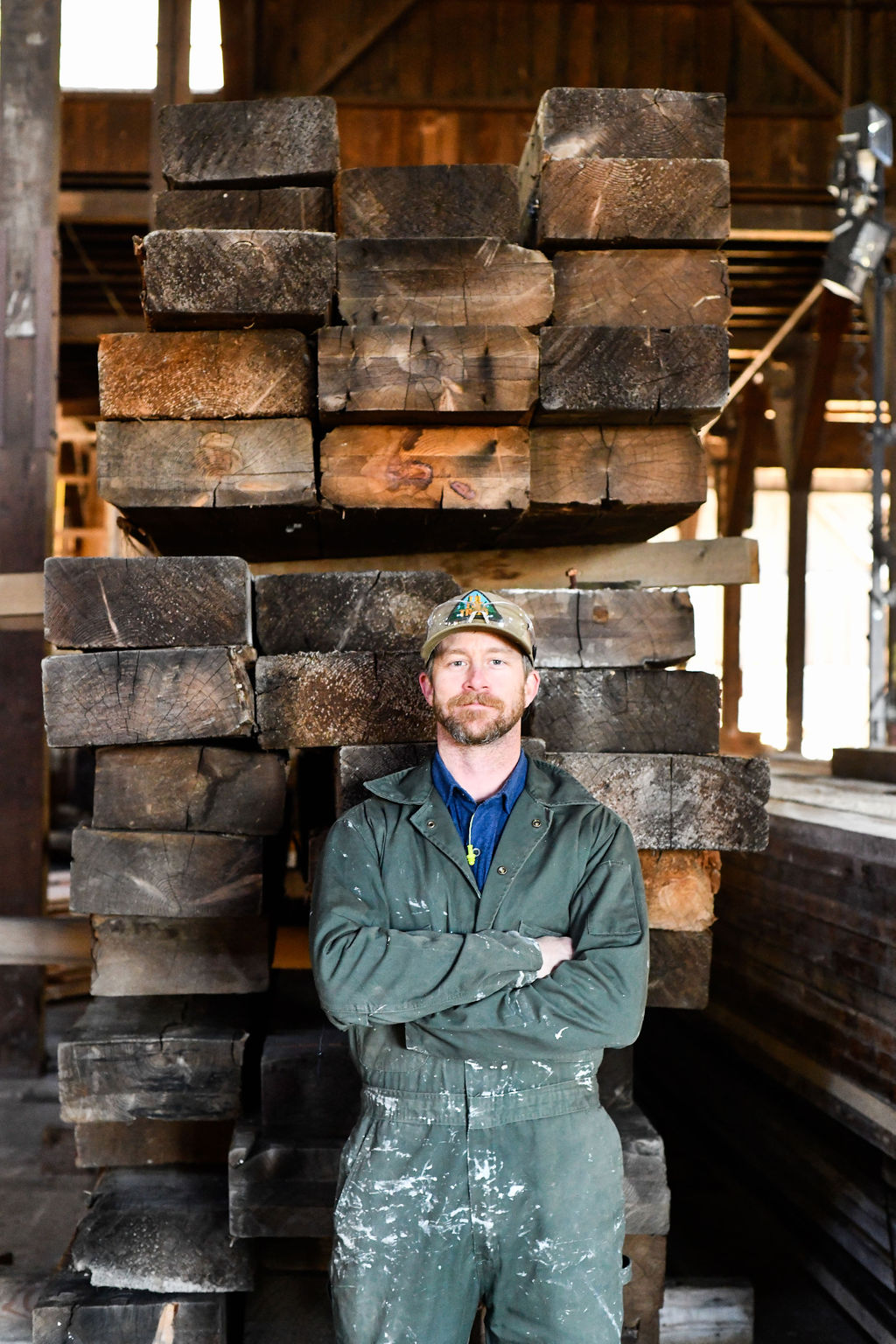
As cities grow, they often decide to demo old buildings in favor of newer, more modern ones. When this happens, the materials from these demolitions (including all this good wood!) heads straight for the landfill, “where it releases carbon dioxide as it decomposes, contributing to greenhouse gas emissions” (National Geographic 2021). “Every year Americans throw away 391,400,000,000 pounds of trash. Over 45% of this, or 176,130,000,000 pounds, is wood and paper products,” it’s important to start taking action and thinking about sustainable ways we can give these types of materials a second life (Save Americas Forests Facts).
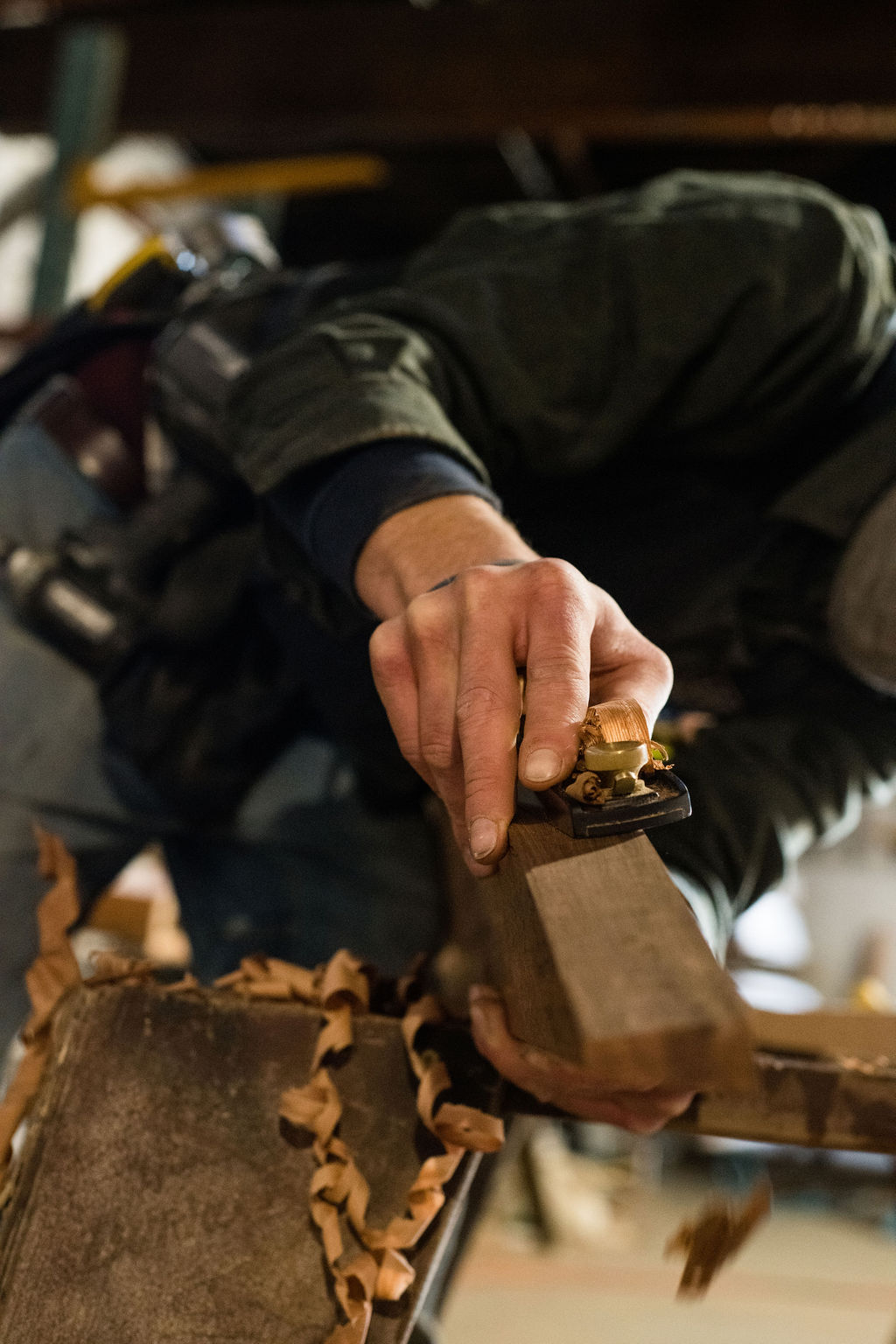
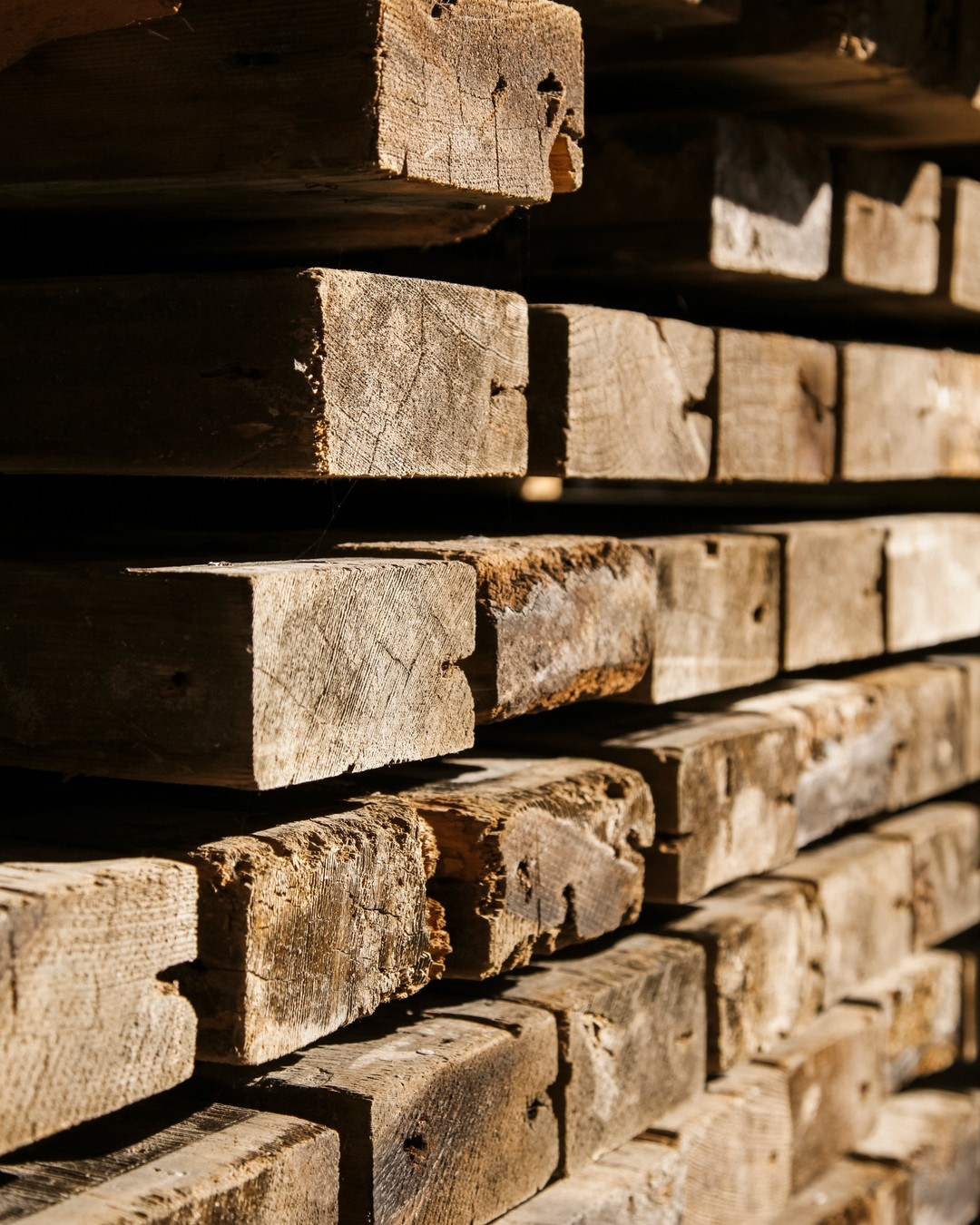
The unique materials collected by Old Woods come from just these kinds of demolition sites and situations, harvested by companies doing good and getting their hands dirty. Salvaging all this old timber is hard work, but it’s worth it…making sure all the timber stays in circulation and out of the garbage. Keep in mind, these types of buildings are coming down all the time. Reusing all this salvaged timber not only creates exciting custom builds with distinct character and rich history, but also keeps new construction from having to rely on virgin wood. Old Woods is giving a second life to all this salvaged timber, which is really important for the state of our climate, the diversity of our forests and our public lands.
Old Woods started as most great things do, a collection of dreams on some dusty shelves. Throughout Pete Nelson’s career he made lots of friends in the world of wood and wonder. Wood folks love wood, and Pete is no exception. Ask any wood connoisseur to show you his collection and he’ll happily lumber over to an old shed, blow the dust off the finests of grains like a vintage bottle of wine and tell you its story through nostalgic eyes.
Pete started collecting all sorts of different woods from people all over the country. And suddenly his woodpile was no longer able to fit on a shelf of dreams. It had become a collection of inspiration big enough to fit into a whole warehouse. Enough beautiful wood to build all the treehouses you see Nelson Treehouse build today.
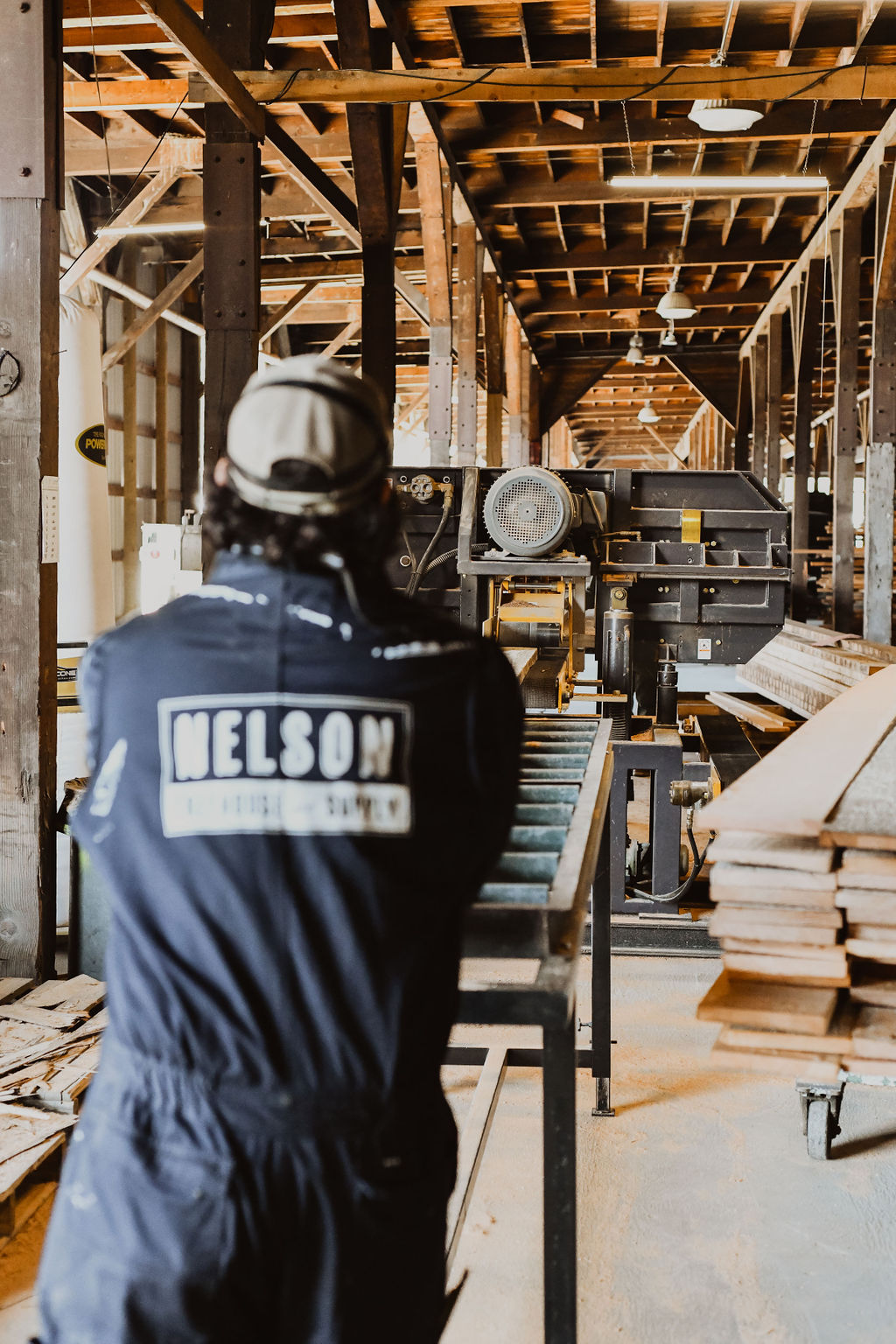
Patrick Willse, who has worked as a traveling carpenter, site lead, and now the shop manager, “saw the need to organize and grow Pete’s wood collection into a lumber yard with all the things Nelson Treehouse uses regularly on [the] treehouses.”
Fast forward 2 years and now Old Woods is a fully working business, bringing in salvaged timber for custom builds to “remanufacture into all the interior finish you see inside of the treehouses; flooring, wall and ceiling paneling, trim, and exposed structural beams. You can take a decent carpenter with a unique wood supply and they can build great things,” Patrick says proudly.
“Another catalyst of turning [Old Woods] into its own entity or branch of Nelson Treehouse was the purchase of a bandsaw that got thrown in a lumber deal Pete made from an Alaskan lumber mill,” Patrick explains. He chuckled to himself, “It was quite intimidating as I had no experience with industrial equipment. But after getting it powered up and running it’s one of the most important tools we have to recut our timbers down to size. It was kind of funny. I was receiving shipping containers full of wood from Alaska. Pete mentioned a saw but I didn’t think it was the size of a Volkswagen beetle. “What am I supposed to do with this?” I asked. He said “cut wood!”. After finding a way to power it in a building with no electricity and some advice from sawyers we got to cutting!”
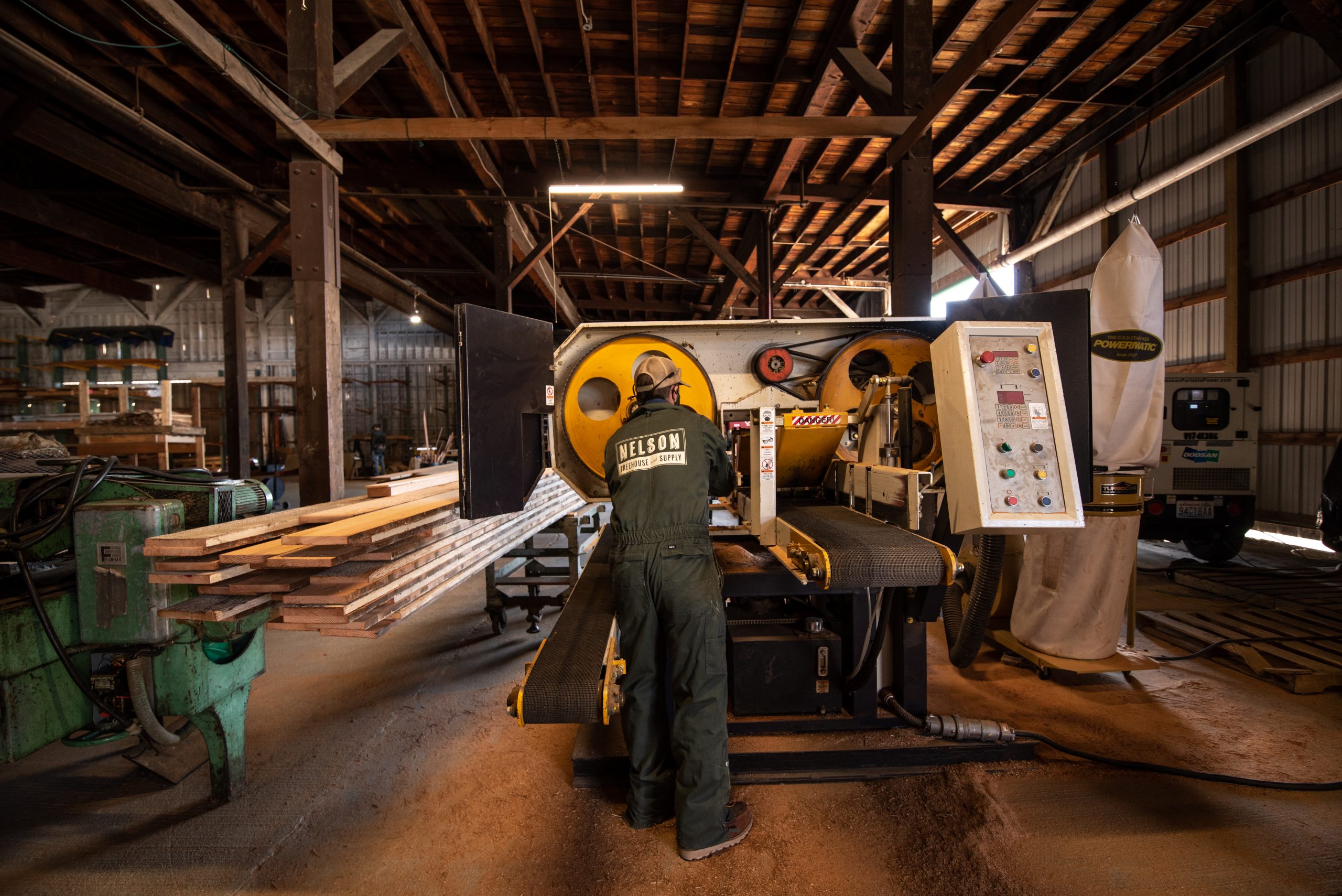
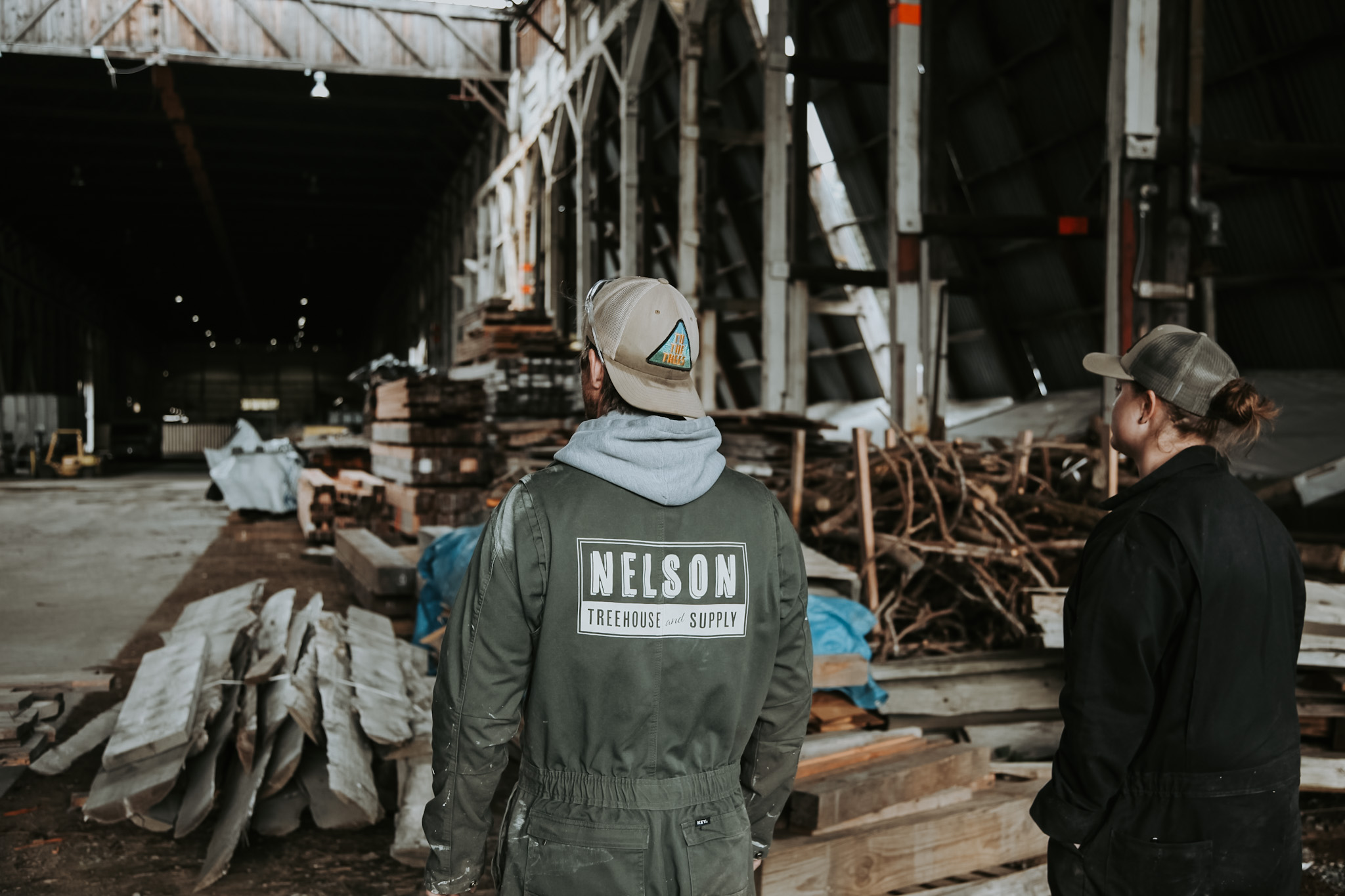 Old Woods is living proof you don’t have to sacrifice the planet to build something beautiful and custom. Rather, they’ve managed to create an ethical AND high standard of quality, promoting sustainability and creativity, by providing salvaged timber for custom builds. It’s not always convenient to put these beliefs in practice, especially in custom construction. By doing so they are setting an incredible example, that if we all work together, we can build beautiful architecture while creating a better future, driven with conservation in mind.
Old Woods is living proof you don’t have to sacrifice the planet to build something beautiful and custom. Rather, they’ve managed to create an ethical AND high standard of quality, promoting sustainability and creativity, by providing salvaged timber for custom builds. It’s not always convenient to put these beliefs in practice, especially in custom construction. By doing so they are setting an incredible example, that if we all work together, we can build beautiful architecture while creating a better future, driven with conservation in mind.
According to an article in Fortune Magazine, “New home construction jumped 6.8% in February, and a whopping 22% compared with the same time a year ago. That’s the fastest growth rate in building since 2006, according to Census data released on Thursday,” (Fortune 2022). Being conscious of building materials matters maybe now more than ever.
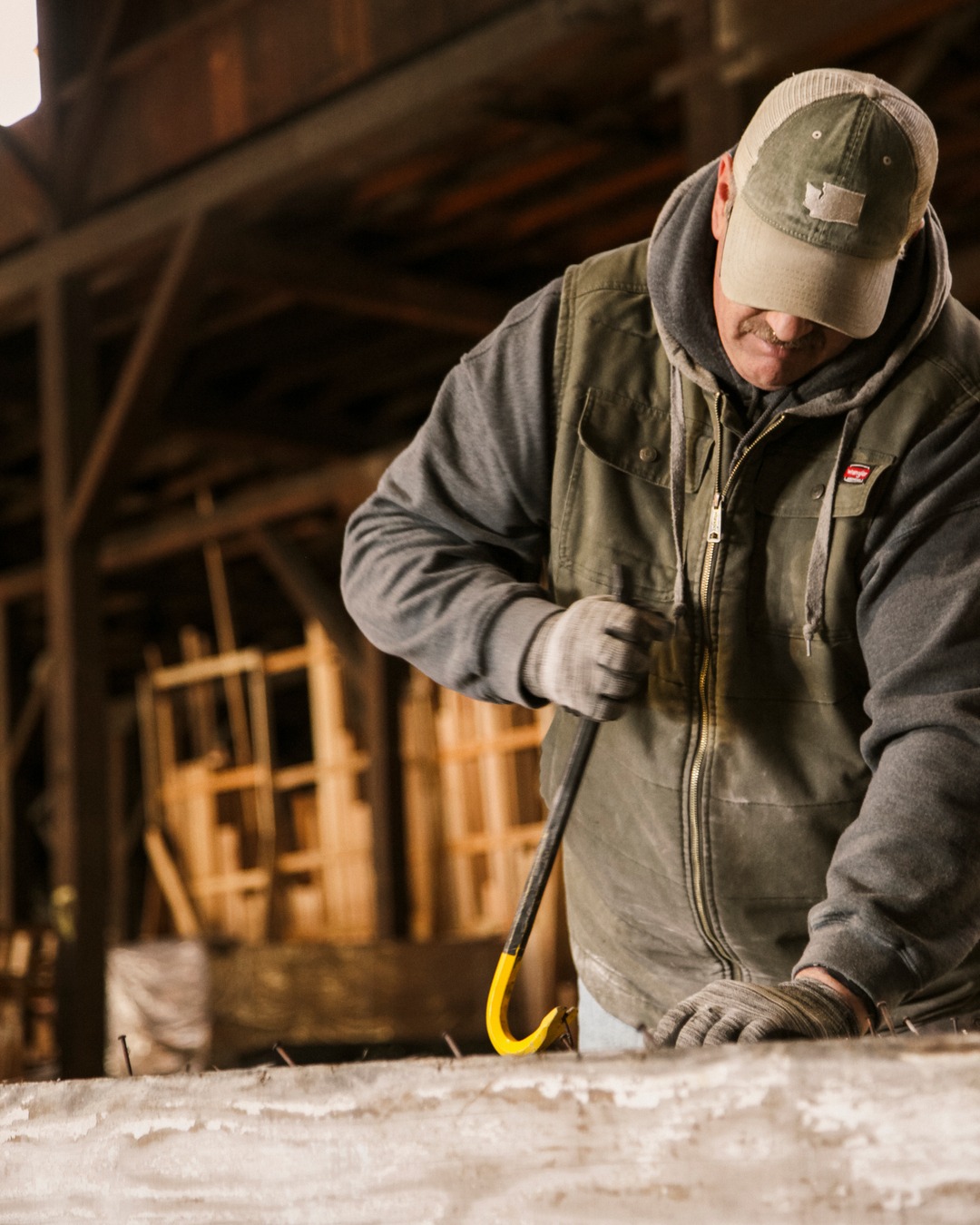
“Of the original 1.04 billion acres of virgin forest in the U.S., over 96% has been cut down,” (Save Americas Forests Facts). With, “most of these last original forests [found] on National Forest land and other public lands” (Save Americas Forests Facts). Unfortunately the remaining public forests have no legal protection from clearcut logging, depleting our public lands of their biodiversity, habitats, and outdoor recreation. Under the current logging plan, many of the last unprotected wild American forests will be cut within decades.
Well, we can make sure we’re supporting businesses like Old Woods and others like it. By sourcing wood ethically, you are voting for the kind of world you want to live in. All this talk about tree got me thinking about the Lorax. “Unless someone like you cares a whole awful lot, nothing’s going to get better, it’s not,” (Dr. Seuss). And I think even the Lorax could agree, Old Woods cares a whole awful lot.
